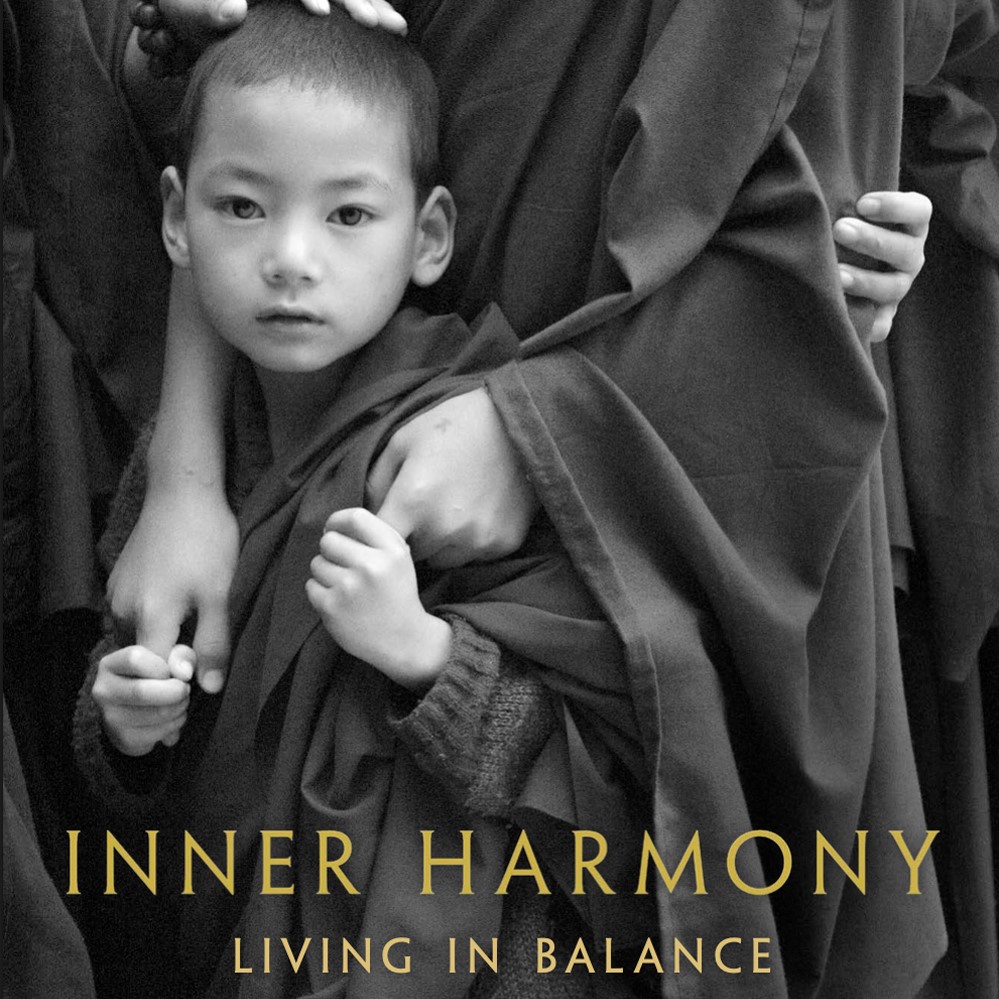Dr. Jon Kolkin’s photographic volume Inner Harmony: Living in Balance exudes creative ambition and heart. A cursory look at the time it took for him to compile this collection of images – seventeen extended visits to Asia from 2007 to 2018 – attests to the time, patience, and toil that the distinguished and globe-trotting creator (who has a medical background) has invested into the book. The countries that this book has taken him to – a total of ten, from Cambodia to Japan, from China to Bhutan – also demonstrate the considerable scale of the photographic project. While in these countries, Kolkin travelled to communities in different regions to photograph temples, monasteries, and people. It is no surprise that his efforts have been acknowledged by His Holiness the Dalai Lama and HRH the Queen Mother of Bhutan in their respective forewords in this book.
The volume is bilingual, translated from the English into German by Ilse Fath-Engelhardt. I had the pleasure of looking over my reviewer’s digital copy and I sense that its atmosphere is slightly different to his past creative works – specifically, “Seeking Wisdom,” “Feathers,” “Dreamscape,” “Equilibrium,” and “Tide Pool.” Here, Kolkin reveals his literary touch by introducing each theme (there are a total of 18) with a short reflection or story, sometimes from his past experiences or a musing about the spiritual life.
In terms of presentation, Kolkin aims to avoid embellishments as much as possible, and return to an almost pristine throwback through black and white. There are exceptions where he deems colour to be an essential component to the photo, but they seem to be in the minority. Black and white intentionally contrasts with a world that is exploding with plentiful colours and vivid iconography, which anyone who has set foot in a Bhutanese monastery or a Chinese temple will know.
Inner Harmony is the culmination of Kolkin’s journey into photography decades ago, when he was answering the call of healing bodies in Vietnam. It is best to quote verbatim his own words:
As digital cameras became more readily available, physicians worldwide began embracing photography as a powerful educational tool. The process involves capturing images to accurately tell a story that will connect the dots between medical conditions, potential treatment options, and outcomes. But this type of photography carried as many challenges as operating without electricity; in order to avoid compromising the quality and flow of patient care, it is essential to be very precise, selective, inobtrusive, and proficient. Decades of practicing photography in this manner proved invaluable while working on the Inner Harmony series.
(12)
The true foundations for this book lie in China, in Wenzhou, which is south of Shanghai. He entered a nunnery, in which he began taking images that would communicate “concepts central to living a healthy and balanced life.” (14) After communicating with the nunnery’s abbess, he was able to take photos of a special ceremony, which Kolkin describes as an atmospheric, otherworldly, and sacred experience. The abbess allowed him to photograph the entire compound for another two weeks, and that extraordinary privilege became the foundational “model” for how he would approach diverse Buddhist communities in China, Nepal, India, and elsewhere. In his words:
Inner Harmony offers rare images of Buddhist life from across contemporary Asia, documenting and celebrating those who are quietly committed to cultivating a nurturing internal environment where well-being can germinate. They are our window into an intimate world of time-honored Asian traditions that cultivate a healthy heart and mind, not so much as a particular belief system but as a focus on fundamental, universal principles for living a life in balance.
(14–15)
There are many images in the book whose beauty and vividness could probably be captured in words. However, the beauty of Kolkin’s images does not simply lie in the appearance or form of the images, important though that may be for a visual medium. As alluded to, Kolkin has gone to special lengths to tell the stories behind the images, which carry the support of the communities that the photographer came into contact and made friends with. As he reflects:
Learning that I was both a physician doing humanitarian work and a photographer committed to the healing power of art, local residents would invariably introduce me to their revered monks and nuns. . . . My photos capture events as they naturally unfolded; they are never staged. Seldom using a tripod, I rely on one camera, one lens, and natural light. Images are immediately deleted if requested. In gratitude, I freely offer photographs to the hosts who open their doors to me.
(15)
Inner Harmony is a rich and superlative collection of lovingly shot images that make a superb addition to any collection of visual Buddhism. The diversity of the Buddhist world is commendably emphasized, while the human dimension remains at the forefront of the photographer’s creative technique. Kolkin’s new book is a pleasure to enjoy, absorb, and reflect on.
See more


